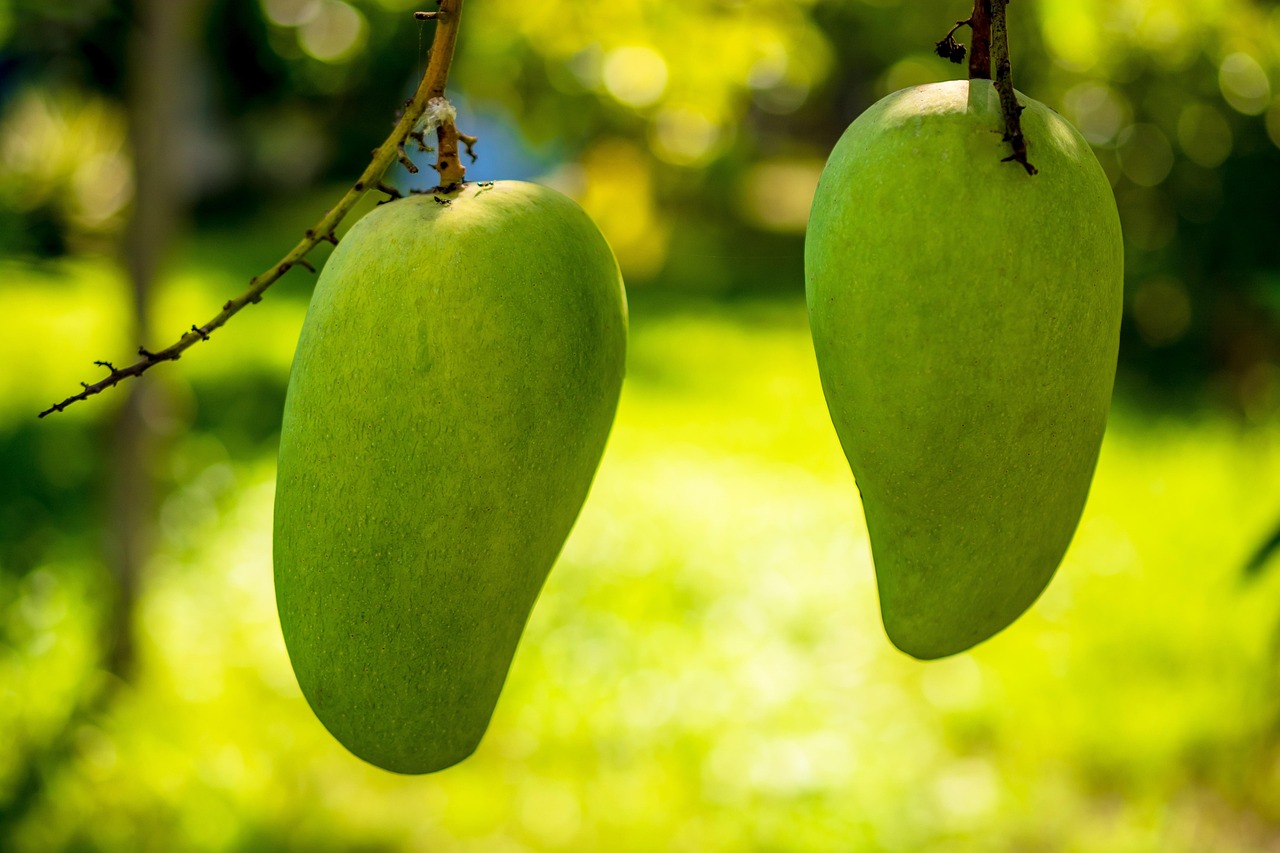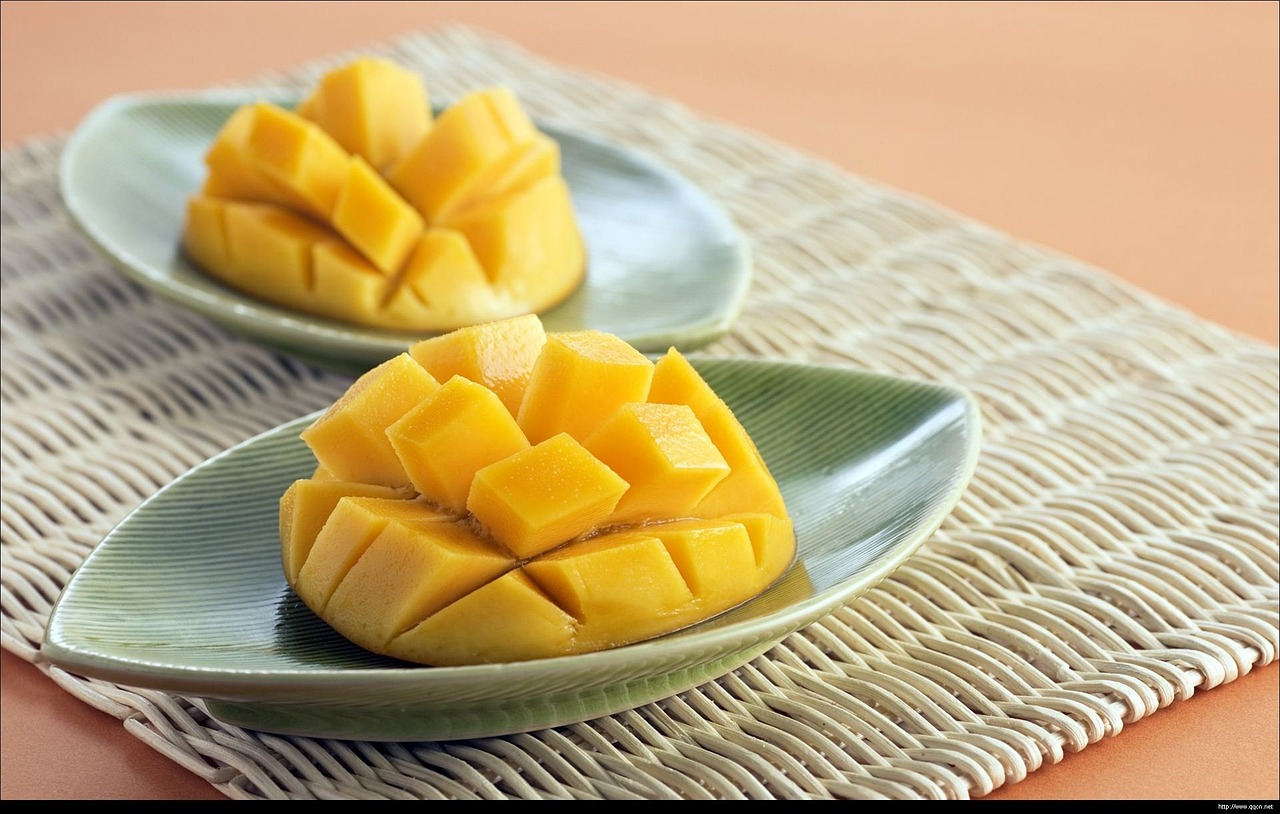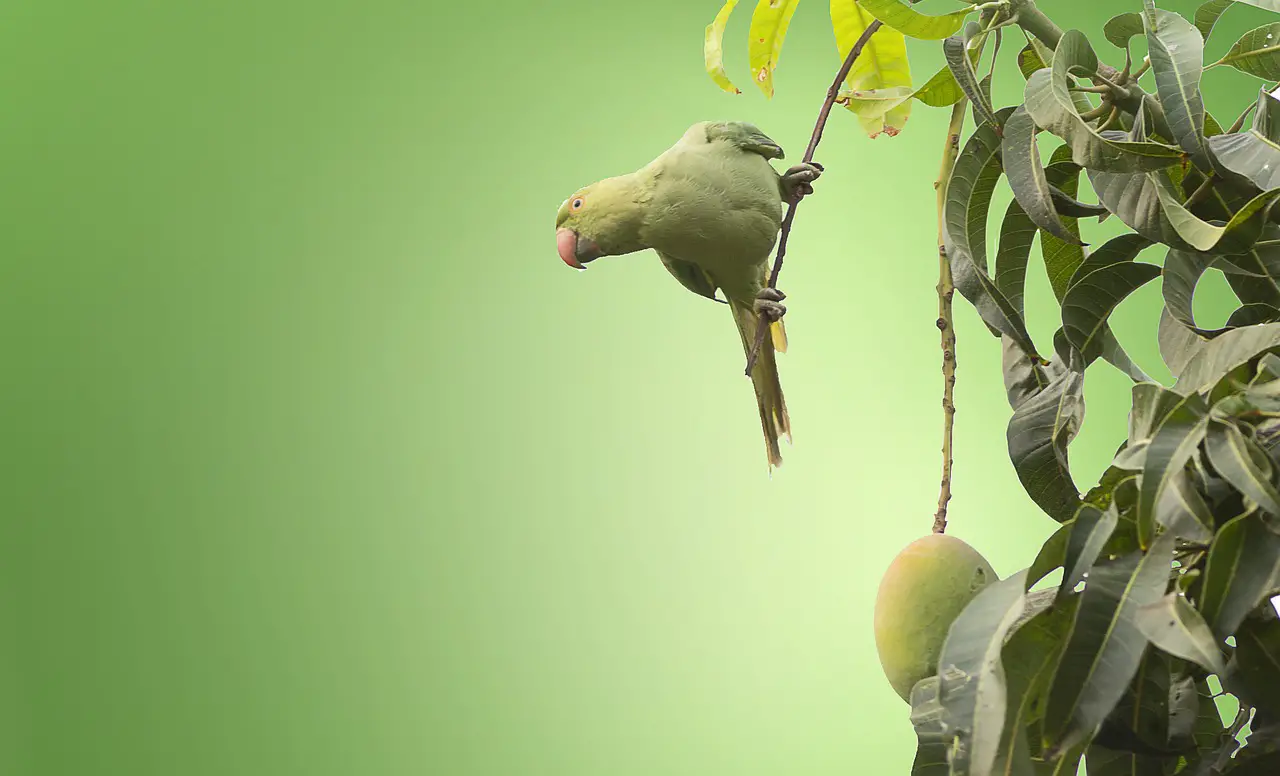Pruning mango trees in commercial tropical orchards is essential for enhancing fruit quality, improving air circulation, and managing tree size. Proper techniques encourage healthy growth and maximize yields, ensuring that orchards remain productive and profitable.
Mango trees (Mangifera indica) are a popular choice for tropical orchards due to their delicious fruit and high market demand. As these trees mature, proper care and maintenance become crucial for sustaining their health and productivity. One of the most important aspects of mango tree care is pruning. This practice not only shapes the tree but also influences its fruit production.

Pruning serves multiple purposes in mango tree management. It helps control the tree’s size, encourages better light penetration, and improves airflow within the canopy. These factors are essential for reducing disease incidence and promoting uniform fruit ripening. Additionally, pruning can stimulate new growth, which is often more productive in terms of fruit yield.
Benefits of Pruning Mango Trees
Understanding the benefits of pruning can help orchard managers make informed decisions about their practices. Here are some key advantages:
- Improved Air Circulation: Pruning removes excess branches that can block airflow, reducing humidity levels in the canopy.
- Better Light Penetration: By thinning out dense foliage, sunlight can reach more parts of the tree, promoting photosynthesis.
- Enhanced Fruit Quality: Pruned trees often produce larger and more flavorful fruit due to improved nutrient distribution.
- Increased Yield: Regular pruning can lead to higher overall fruit production by encouraging the growth of productive branches.
- Disease Control: Removing dead or diseased wood helps prevent the spread of infections and pests.
In addition to these benefits, pruning practices can vary based on the age of the tree and the desired outcomes. Young trees may require different techniques compared to mature ones. Understanding these differences is crucial for successful mango orchard management.

Types of Pruning Techniques
There are several pruning techniques that orchardists can employ depending on their specific goals. Each technique has its own benefits and applications.
| Pruning Technique | Description | Best Time to Prune |
|---|---|---|
| Thinning | Removing selected branches to increase light and airflow. | During the dry season |
| Heading Back | Cuts made to reduce the height of the tree and promote bushier growth. | After harvest |
| Rejuvenation | Severe pruning of older trees to stimulate new growth. | At the beginning of the growing season |
Thinning is one of the most common methods used in mango orchards. By selectively removing branches, growers can ensure that each part of the tree receives adequate light and air. This technique is particularly beneficial in areas with high humidity, where fungal diseases can thrive in dense foliage.
Heading back is another effective technique that encourages a more compact growth form. This method is especially useful for managing tree height, making it easier to harvest fruit. It involves cutting back the tips of branches, which stimulates lateral growth and results in a bushier appearance.

For older trees that may have become unproductive, rejuvenation pruning offers a solution. This technique involves significant cuts to encourage new growth and restore vigor. It is important to time this method correctly, as it can stress the tree if not done during the right season.
Timing and Frequency of Pruning
The timing and frequency of pruning are crucial factors that determine its effectiveness. In general, pruning should be performed during the dry season when mango trees are less susceptible to diseases. This period typically occurs after harvest when the tree is preparing for its next growth cycle.
The frequency of pruning will depend on various factors, including tree age, growth rate, and specific management goals. Younger trees may require more frequent attention to shape their development, while mature trees may need less frequent but more thorough pruning sessions.

By understanding these critical elements of pruning, orchard managers can better maintain their mango trees’ health and productivity. In turn, this leads to higher quality fruit and a more successful commercial operation.
Tools and Equipment for Pruning
Using the right tools and equipment is vital for effective pruning. Proper tools not only make the job easier but also ensure clean cuts that promote healing in the tree. Here are some essential tools commonly used in mango tree pruning:
- Hand Pruners: Ideal for small branches, hand pruners offer precision and control.
- Loppers: These are useful for cutting thicker branches. They provide leverage to make clean cuts without excessive force.
- Saws: For larger branches, a pruning saw or a pole saw can be necessary. They are designed for making smooth cuts on bigger limbs.
- Safety Gear: Gloves, goggles, and long sleeves protect against cuts and potential injuries from falling branches.
Choosing high-quality tools can make a significant difference in the efficiency of the pruning process. Maintaining these tools by keeping them sharp and clean will help ensure they perform well and last longer.
Pruning Techniques for Different Growth Stages
Different stages of growth require tailored pruning techniques to optimize tree health and fruit production. Understanding these stages helps orchardists apply the right approach at the right time.
Young Trees
For young mango trees, establishing a strong structure is essential. The focus during this stage should be on shaping the tree and promoting healthy growth. Here are some key techniques:
- Initial Shaping: Remove any competing leaders and select a central leader to promote a single trunk structure.
- Branch Selection: Choose several strong lateral branches to develop a well-distributed canopy.
- Height Control: Regularly pinch back tips to encourage lateral growth and prevent the tree from becoming too tall.
This early attention helps ensure a balanced tree structure that can support fruit development in later years.
Mature Trees
Mature mango trees require different management strategies to maintain productivity. The goals during this stage include enhancing light exposure and promoting fruiting wood. Consider the following techniques:
- Thinning Out: Remove older, less productive branches to encourage new growth.
- Canopy Management: Trim excess foliage to allow sunlight to penetrate throughout the canopy.
- Deadwood Removal: Regularly check for and remove any dead or diseased branches to maintain tree health.
Regular maintenance of mature trees can lead to improved yields and fruit quality, making it crucial for commercial orchards.
Signs That Pruning is Needed
Recognizing when to prune is just as important as knowing how to prune. There are several signs that indicate it is time to take action:
- Pest Infestation: If pests are becoming a problem, removing affected branches can help manage outbreaks.
- Disease Symptoms: Look for wilting leaves, discoloration, or mold growth, which may require immediate pruning of affected areas.
- Overcrowding: If branches are rubbing against each other or creating dense foliage, thinning may be necessary to improve airflow.
- Poor Fruit Production: A decline in fruit yield can signal that rejuvenation pruning is needed to stimulate new growth.
Acting on these signs promptly can help maintain the health and productivity of mango trees in commercial orchards.
Post-Pruning Care
After pruning, providing proper care is essential for helping trees recover and thrive. Here are some important post-pruning practices:
- Watering: Ensure adequate watering following pruning, especially during dry spells. This helps reduce stress on the tree.
- Nutrient Management: Applying fertilizers can promote healthy regrowth after pruning. A balanced fertilizer can support new leaf and fruit development.
- Pest Monitoring: After pruning, keep an eye on any potential pest issues that may arise due to changes in tree structure.
Caring for trees post-pruning is vital for recovery and ensures they remain productive in future growing seasons.
Common Mistakes in Pruning
Avoiding common pitfalls can greatly enhance the effectiveness of pruning practices. Here are several mistakes to watch out for:
- Improper Timing: Pruning at the wrong time can weaken trees or reduce yields.
- Aggressive Pruning: Removing too much foliage at once can stress the tree, leading to poor recovery.
- Neglecting Tree Structure: Failing to maintain a balanced shape can result in weak trees that struggle to support fruit weight.
- Lack of Sanitation: Using dirty tools can spread diseases between trees, compromising overall orchard health.
Avoiding these mistakes will improve the success of your pruning efforts and contribute to a thriving mango orchard.
Understanding Mango Tree Growth Cycles
To effectively prune mango trees, it is essential to understand their growth cycles. Mango trees have distinct growth phases that influence how and when pruning should be performed. Recognizing these cycles can lead to more informed decisions about pruning practices.
Growth Phases of Mango Trees
Mango trees generally go through several key growth phases throughout the year, each characterized by different biological activities:
- Flush Growth: This phase occurs in spring when new shoots emerge. Pruning during this time can help manage the shape of the tree.
- Flowering: Typically occurring in late spring or early summer, this phase is crucial for fruit production. Pruning should be minimized to avoid disrupting flower development.
- Fruit Development: After flowering, the tree focuses on developing fruit. Careful management is needed during this stage to avoid stress on the tree.
- Dormancy: In the winter months, mango trees enter a period of dormancy. This is an ideal time for more extensive pruning, as the tree is less susceptible to damage.
Understanding these phases helps orchard managers determine the best times for specific pruning activities. Timing cuts to coincide with the growth cycle can improve overall health and productivity.
Pruning for Disease Prevention
Pruning mango trees is not only about enhancing growth but also plays a critical role in disease prevention. Proper pruning techniques can significantly reduce the risk of infections that can threaten the health of the trees.
Common Mango Tree Diseases
Mango trees are susceptible to various diseases, including:
- Powdery Mildew: A fungal disease that appears as white powdery spots on leaves and fruit.
- Anthracnose: A serious fungal disease that causes black lesions on leaves, flowers, and fruit.
- Leaf Spot: Characterized by brown or black spots on leaves, which can lead to premature leaf drop.
Regular pruning helps manage these diseases by removing diseased branches and improving air circulation within the canopy. By keeping the tree healthy and reducing humidity levels, the likelihood of disease occurrence decreases.
Best Practices for Disease-Preventive Pruning
Implementing specific practices during pruning can enhance disease prevention efforts:
- Sanitize Tools: Always disinfect pruning tools before and after use to prevent cross-contamination between trees.
- Remove Affected Areas: Promptly remove any branches showing signs of disease. Dispose of them properly to avoid spreading pathogens.
- Avoid Overcrowding: Thin out branches to ensure good airflow and light penetration, reducing humidity levels conducive to fungal growth.
By focusing on disease prevention through effective pruning, orchardists can maintain healthier mango trees and reduce crop losses.
Integrating Pruning with Other Cultural Practices
Pruning should not be viewed in isolation; it is part of a broader approach to mango tree management. Integrating pruning with other cultural practices can optimize tree health and productivity.
Nutrient Management
Nutrient management complements pruning by ensuring trees receive essential elements for growth and recovery. Following pruning, it is important to:
- Apply Fertilizers: Use balanced fertilizers that provide nitrogen, phosphorus, and potassium to support regrowth and fruit development.
- Monitor Soil Health: Regularly test soil to identify nutrient deficiencies and adjust fertilizer applications accordingly.
Irrigation Practices
Irrigation plays a vital role in supporting trees after pruning. Adequate water supply is crucial for recovery, especially during dry periods. Consider the following practices:
- Consistent Watering: Ensure trees receive consistent moisture after pruning to reduce stress and promote healthy regrowth.
- Avoid Overwatering: Implement proper drainage practices to prevent root rot and other water-related issues.
Record Keeping and Monitoring
Maintaining accurate records of pruning activities can enhance orchard management significantly. Keeping detailed notes allows growers to track growth patterns, yields, and any issues that arise over time.
What to Record
The following information is beneficial for effective record-keeping:
- Date of Pruning: Document when each tree is pruned to correlate with growth responses.
- Branches Removed: Note which branches were cut and their condition (healthy, diseased, etc.).
- Post-Pruning Observations: Record any changes in growth or fruit production following pruning sessions.
This data will help inform future pruning decisions and improve overall orchard health over time.
Conclusion of Practical Techniques
The practical techniques discussed in this section emphasize the importance of understanding mango tree growth cycles, integrating pruning with disease prevention strategies, and maintaining comprehensive records. By applying these concepts, orchard managers can effectively enhance the productivity and longevity of their mango trees.
Final Considerations for Effective Pruning
Pruning mango trees is a vital practice in the management of commercial tropical orchards. It influences not only the immediate health of the trees but also their long-term productivity and fruit quality. As growers implement the techniques discussed, several additional considerations can enhance their success.
Training Young Trees
In addition to pruning, training young mango trees is essential for establishing a strong framework. Training involves guiding the growth of branches to achieve a desired shape and structure. Here are some key methods for effectively training young mango trees:
- Staking: Use stakes to support young trees, encouraging them to grow upright and straight, which is crucial for structural integrity.
- Branch Bending: Gently bending branches can encourage lateral growth, helping to create a broad canopy that supports better light access.
- Regular Inspection: Monitor the growth of young trees closely to identify any signs of imbalance or undesired growth patterns that may require intervention.
Training young mango trees in combination with proper pruning techniques will lead to healthier, more productive trees as they mature.
Environmental Considerations
Environmental factors play a significant role in the effectiveness of pruning practices. Recognizing the specific climate and soil conditions of your orchard can aid in developing tailored pruning strategies. Here are some environmental aspects to consider:
- Soil Health: Regularly test soil for pH and nutrient levels. Healthy soil promotes robust tree growth and recovery post-pruning.
- Climate Conditions: Be aware of local weather patterns. Extreme temperatures or humidity can influence the best times for pruning.
- Pest and Disease Pressure: Monitor local pest populations and disease occurrences. Adjust pruning timing and techniques based on observed threats.
By aligning pruning practices with environmental considerations, orchardists can optimize tree health and fruit production.
Community and Knowledge Sharing
The commercial cultivation of mangoes benefits greatly from community engagement and knowledge sharing. Joining local growers’ associations or participating in workshops can provide valuable insights into effective pruning techniques and orchard management practices. Consider the following approaches:
- Workshops and Seminars: Attend educational sessions on mango tree care to learn about the latest research and techniques from experts.
- Networking with Other Growers: Share experiences and strategies with fellow mango growers. This exchange can lead to new ideas for managing orchards effectively.
- Utilizing Online Resources: Explore online forums, webinars, and publications focused on mango cultivation to stay informed about best practices.
Engaging with a community of growers fosters collaboration and continuous improvement within the industry, ultimately benefiting all participants.
Conclusion
In summary, effective pruning of mango trees in commercial tropical orchards is a multifaceted endeavor that requires attention to detail, an understanding of tree biology, and adaptability to environmental conditions. By employing proper techniques, integrating pruning with other cultural practices, and maintaining accurate records, orchard managers can significantly enhance both the health of their trees and the quality of their fruit.
The importance of continuous learning cannot be overstated. By staying informed about best practices and engaging with the broader agricultural community, growers can navigate challenges and seize opportunities in mango production. With dedication and knowledge, successful pruning can lead to thriving orchards that produce high-quality mangoes, meeting both market demand and grower expectations.
The journey of mastering mango tree pruning is ongoing. As agricultural practices evolve, remaining open to new ideas and methodologies will ensure that orchardists can adapt and thrive in this dynamic industry.
